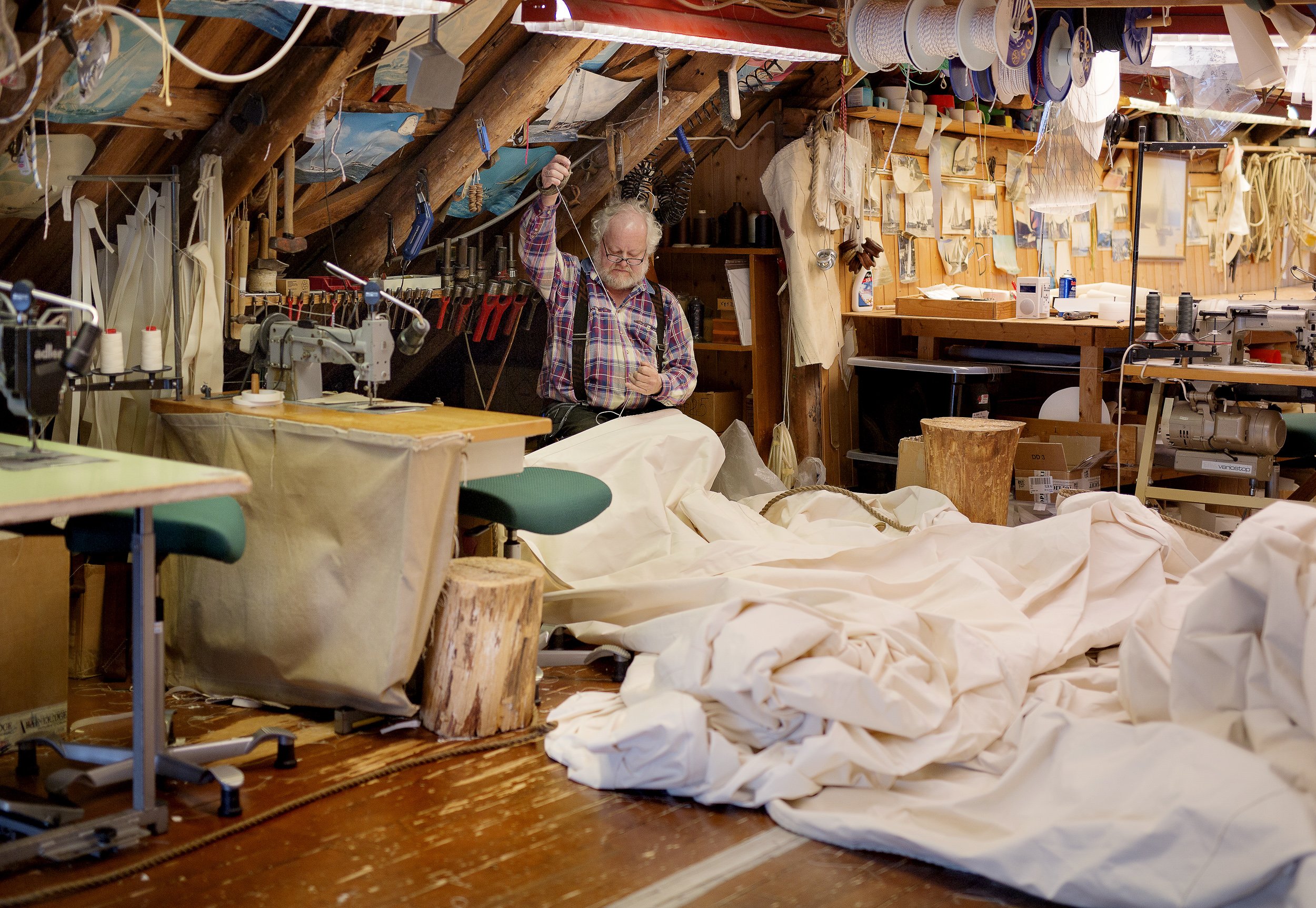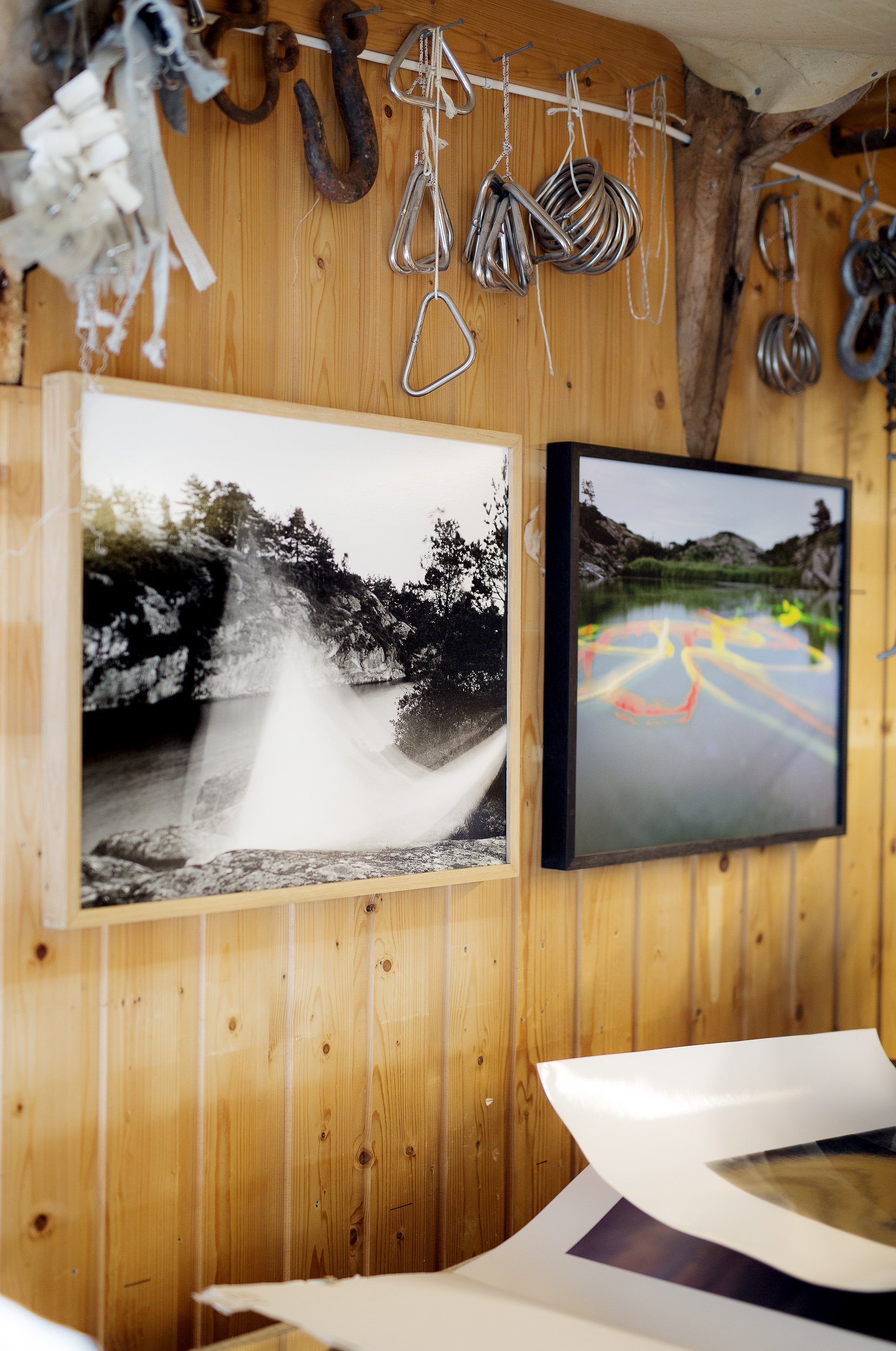Photo: Agnete Brun
Photo: Agnete Brun
Photo: Agnete Brun
Photo: Ina K. Andersen
Photo: Nils Vik
Photo: Agnete Brun
Photo: Agnete Brun
Photo: Nils Vik
Photo: Alicja Czarnecka
Photo: Alicja Czarnecka
Photo: Alicja Czarnecka
I live, work and grew up in Lyngør, as the twelfth generation in my family. Lyngør is a car free island community off the southern coast of Norway that EU voted ‘Europe‘s best kept village‘ in 1991. My father is a sailmaker, my grandfather was a sailor and as a child I rowed to school. A decade ago, I circum-navigated the Atlantic Ocean in a pilot cutter built in 1894. My heritage, my experiences, Lyngør's history, everyday life and the future here are inextricably linked to and influenced by the sea. This is the basis and influence for my pictorial experiments.
Lyngør came to exist as a society because it is a good harbor, and at its peak, towards the end of the 19th century, Lyngør was a seafaring town with 600 inhabitants, most of whom were involved in seafaring. Globalization has thus facilitated settlement, life and work in this island community. Today, transport accounts for around one-fifth of global carbon dioxide (CO2) emissions. Will Lyngør‘s raison d'être also become it‘s doom? Or will it be vacated way sooner due to centralization and increased tourism? The historical significance of Lyngør as a relic from, or a window into, a maritime past is under pressure from investors who want to exploit it‘s highly regarded status. The islands have repeatedly set price per square meter records in Norway.
Modernization, centralization and globalization processes are slow and impossible to influence at an individual level. The consequences can thus be difficult to detect and deal with. Photography, which bears traces of the actions of natural forces and human influence, has perhaps a particular potential to shine a light on such issues.
Photographic technology has enabled a unique interaction between the human eye and mechanical optics; to make the invisible visible. By pointing the camera at nature and leaving parts of the control over the result to the mechanics, I give the forces of nature room to play. Through long exposures, or by collecting several exposures from the same subject in one image, the time and movements that activate the landscape are fixed in my work. The intention is to convey an experience of being somewhere, and sensing what surrounds you.
In an old herring-saltery, moved to Lyngør in 1890, I have set up a darkroom. Here I can i.e. enlarge and mount silver gelatin fibre prints in widths up to 170cm, that I exhibit in frames made by a local boatbuilder. Last year an image created by artificial intelligence won a photography award. We can thus say that the darkroom craft has gained a newfound topicality. Sailmaking, which is practiced on the floor above my darkroom in Lyngør, is a profession declared worthy of protection in Norway. Traditional crafts are part of the world's intangible culture, and in 2003 UNESCO adopted a convention for the protection of this part of the cultural heritage. I personally think the darkroom craft should be protected too.
Protected or not, I am strongly motivated by keeping alive an old craft tradition, both through my own activity, and through the passing on of this. Every winter I get help from assistants. They are given training in darkroom work, while at the same time getting access to the darkroom and camera equipment. This year I had a BFA graduate from Gerrit Rietveld Academie in Amsterdam and an MFA graduate from the Academy of Fine Arts in Bergen. From time to time, I also welcome workshop guests through the VAWAA portal. Last winter I had an attendee from Denver, Colorado, and this winter there will be one from Switzerland.
My next exhibition will combine my conceptual nature-influenced photographs with documentation of my ancestors' maritime activities, Lyngør's history and portraits of the island community's last permanent residents. The aim is to visualize connections between generations, knowledge sharing and inheritance, social development - as well as how the footprint we leave; is influenced or dependent on external forces.
All my ancestors were shipmasters. My great-grandfather drowned at sea, just outside Lyngør. On the 9th of April 1940, the day Germany invaded Norway, my grandfather mustered on a ship in Los Angeles. M/S Romulus was incorporated in the merchant fleet, and they transported iron ore for arms production from Lima, Peru to LA. He mustered out in Lima in 1941 to work for a mining company in the Andes, and later he became the skipper of a yacht, in Callao. My grandfather could not return to Lyngør until 1946, leaving my grandmother waiting for 9 years.
The images where I let go of control and let nature influence the process, will be juxtaposed by the documentation of large processes that are beyond individual control. This contradiction can shed light on challenges around climate change, and open up discussions that put both scientific, social, political and cultural issues on the agenda.
When my exhibition ‘Time by the Sea‘ opened in 2021, it was Dag O. Hessen, professor in biology and writer, who gave the opening speech. In it, the environment and climate debate were a common thread, and Hessen pointed out that it is the sea we will live off after our short oil intermezzo is over. In order to create greater awareness and engagement around the debates, he believed that the role of art is essential:
"Must art be legitimized by its usefulness? I do not think so, in the same way that research does not have to legitimize itself by its immediate and concrete utility value. But still, it is clear that art and science can be united, perhaps should also be united, now that our future is at stake. Research may involve one half of the brain, but art is needed to engage the other. Man is a visual animal, and the great environmental battles can only be won by engaging both halves of the brain."
I am originally trained as an art director from Westerdals, has studied at Oslo Fotokunstskole and assisted the photographer Dag Alveng. With pictures from an Atlantic circumnavigation in a pilot cutter from 1894, I made my debut in 2009. Last year, I was purchased by Norway's national museum of photography (Preus), last autumn I participated in a group exhibition at the Flowers Gallery in London, and this spring I had a solo exhibition in Venice. My work has also been shown in Boston, Paris, New York, Los Angeles and Vancouver, among others. The New Yorker, Harper's Magazine, D2 and Dagbladet Magasinet have written about my work.















